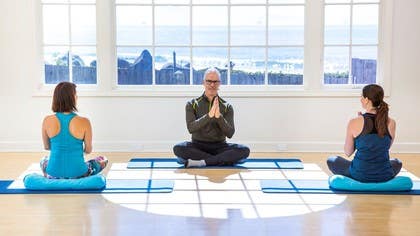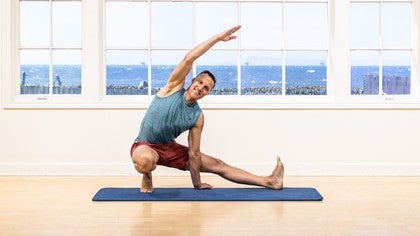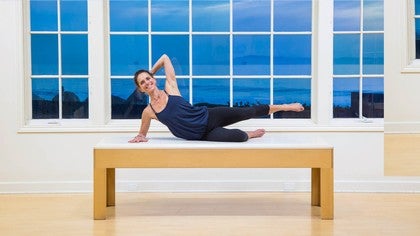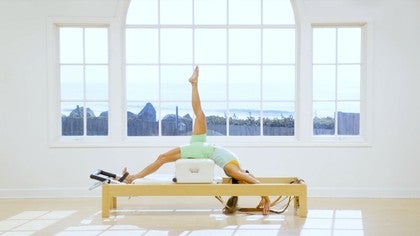
How Positive Movement Experiences Help Us Overcome Pain
What do you see as the role of Pilates or Pilates teachers in working with chronic pain or special cases?
The role of Pilates and of the Pilates teacher really is to facilitate better movement. Pilates teachers have a unique role in addressing chronic pain because of our education and because we work in a unique environment where we can facilitate whole body movement.
The Pilates equipment - with a skilled teacher - enables people to perform exercises that they would not be able to do without pain or without making their chronic pain worse. They are able to feel normal and like everyone else.
When people regain a sense of normalcy, and they perceive that they can move without pain, they begin to feel better psychologically as they are healing physically.
This does not mean that they overcome the factors that create pain, necessarily, but they can have a break from the pain they typically experience. Additionally, if they can eventually experience ease of movement on their own, then that is a victory which decreases their fear and increases their activity level.
What is unique about the Pilates environment that facilitates whole body movement?
It's unique because of the equipment we use: springs, pulleys, closed and open chain environments and moving carriages to assist clients in their movement while minimizing the effect of gravity. With the Pilates equipment, we can change resistance, decrease the length of levers, vary proprioceptive feedback, and base of support.
We can use the equipment to re-educate clients about proper alignment and load for their bodies, and then they can use those tools when they leave the studio. They can have multiple positive movement experiences in the studio which begins to change the wiring in the brain and then begins to translate into their lives outside the studio.
What's an example of that translation?
A person with MS may not be able to do squats from standing, but on the Reformer, without gravity, they can do Footwork and experience a squat using three or four springs. It is a re-programming of the body and of the mind.
What can Pilates teachers do to improve the experience for a person with chronic pain or any kind of pain?
Apart from being experts in movement, we need to communicate with people in layman's terms and connect with them at an appropriate level for that individual. It's important not to teach with condescending language. We are all learning, and with pain and trauma, these clients are learning to move in a new way. Instead of talking down to them, let's help them increase their own knowledge of the movement and provide tools and not rules that will help them make smart decisions.
We need to ask questions such as “What do you notice in that position?” and use our knowledge and tools to work with that feedback. By communicating with them in a supportive and understanding way, we are adding to their positive experience.
In teaching Pilates around the world, what commonalities have you found in the Pilates experience for those dealing with pain?
Regardless of age or other demographics, most people experience some pain or injury in their life. We need to meet people where they are and teach that unique person. A four-year-old with Autism and an 85-year-old with Alzheimer's may have a movement language that is quite similar, and they may process information in a similar way. But another 85-year-old might have the mind and body of a much younger person and you would work with them for their unique person.
If we can understand the person, we can improve their experience. We need to be able to work with all types of bodies and abilities and psychologies.
Pilates teachers are well-equipped with the ability to create a positive movement experience for every individual, and we can improve our communication skills to build self-esteem, hope and confidence that each of our clients can return to health.
Comments
Can I ask who took that great action shot of him?
You need to be a subscriber to post a comment.
Please Log In or Create an Account to start your free trial.
















